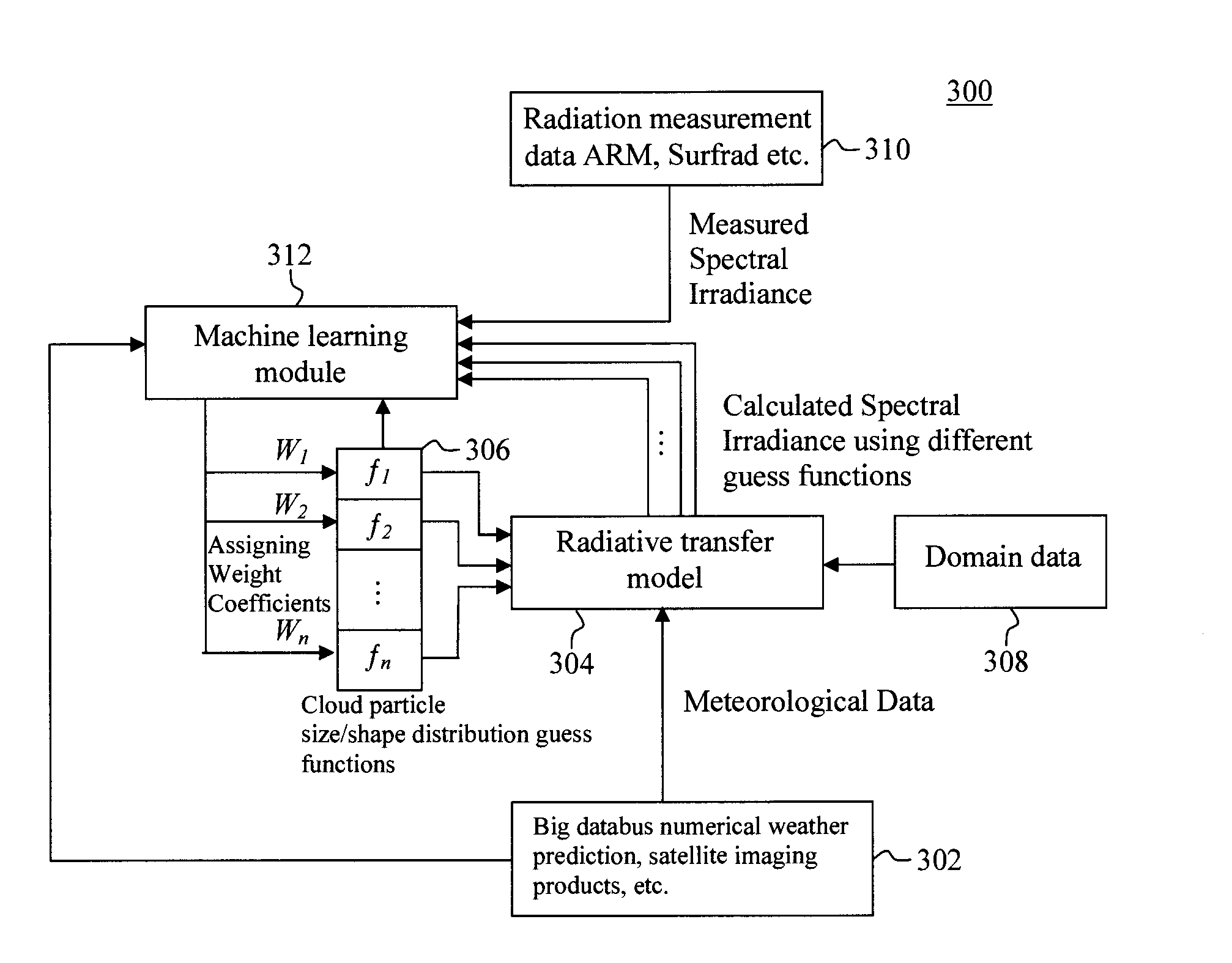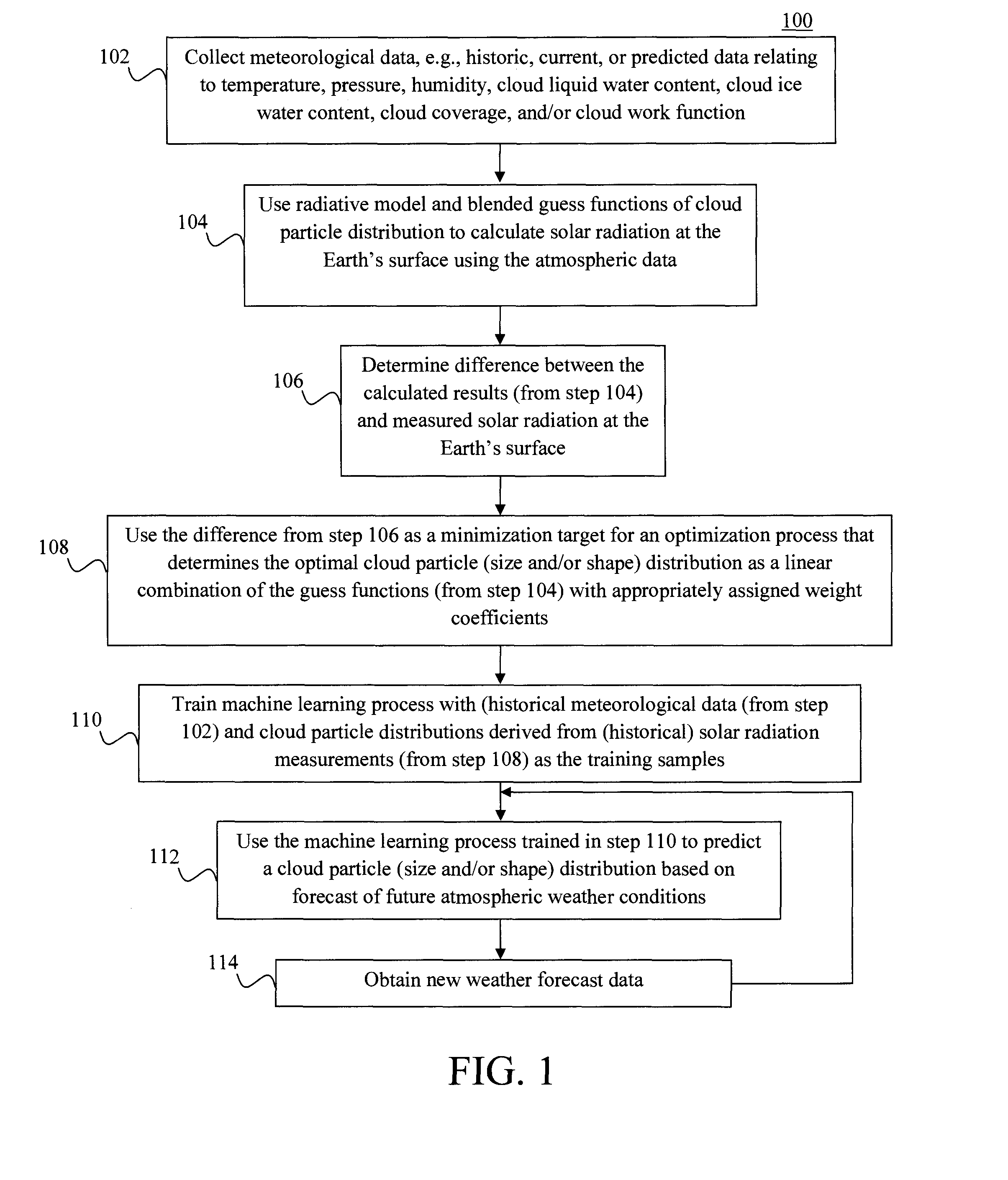Machine Learning Approach for Analysis and Prediction of Cloud Particle Size and Shape Distribution
a cloud particle size and shape distribution technology, applied in the field of machine learning-based techniques for analysis and prediction of cloud particle size distribution and solar radiation, can solve the problems of affecting the accuracy of weather prediction and various other technologies, unable to provide reliable models for first principle prediction of cloud particle size/shape distribution, and often too sophisticated and costly to cover continental-wide areas
- Summary
- Abstract
- Description
- Claims
- Application Information
AI Technical Summary
Benefits of technology
Problems solved by technology
Method used
Image
Examples
Embodiment Construction
[0014]Provided herein is a machine-learning based approach for analyzing and predicting cloud particle distribution (size and / or shape) leveraging upon the vast existing historical weather and solar radiation data in the public domain.
[0015]FIG. 1 is a diagram illustrating an exemplary methodology 100 for analyzing and predicting cloud particle characteristics. As described above, clouds can contain liquid water droplets and / or ice particles. These are the cloud particles analyzed in the present techniques. The term “cloud particle characteristics,” as used herein refers to cloud particle size distribution and / or cloud particle shape distribution. It is notable that liquid water droplets are considered to have an amorphous shape and are approximated as a sphere. Thus analysis and prediction of shape distribution, as described herein, preferentially pertains to ice particles in the clouds which can generally have one of the following shapes: dendrite, aggregate, bullet-rosette, plate...
PUM
 Login to View More
Login to View More Abstract
Description
Claims
Application Information
 Login to View More
Login to View More - R&D
- Intellectual Property
- Life Sciences
- Materials
- Tech Scout
- Unparalleled Data Quality
- Higher Quality Content
- 60% Fewer Hallucinations
Browse by: Latest US Patents, China's latest patents, Technical Efficacy Thesaurus, Application Domain, Technology Topic, Popular Technical Reports.
© 2025 PatSnap. All rights reserved.Legal|Privacy policy|Modern Slavery Act Transparency Statement|Sitemap|About US| Contact US: help@patsnap.com



